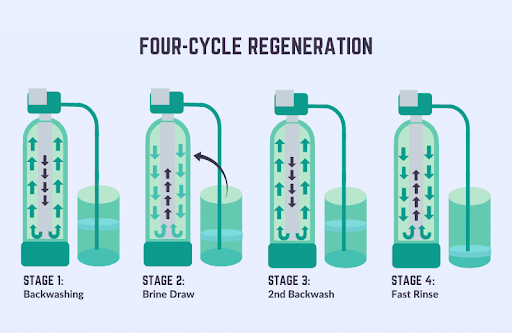Water Treatment: Understanding the Process and Technology

Water treatment is an important process to ensure the availability of clean and safe water for various needs, whether domestic, industrial, or environmental. There are two main types of water treatment, namely IPA (Water Treatment Plant) which treats clean water and IPAL (Waste Water Treatment Plant) which treats wastewater. This article will discuss the differences between WTPs and WWTPs, the common technologies used, and distinguish physical, chemical, and biological processes in water treatment.
Difference between IPA and WWTP
1. IPA (Water Treatment Plant)
-
Focuses on processing raw water into clean water that is suitable for domestic and industrial use.
-
Involves processes such as coagulation, flocculation, sedimentation, filtration, and disinfection.
2. WWTP (Waste Water Treatment Plant)
-
Focuses on treating wastewater from various sources such as household, industrial, and agricultural to remove contaminants before it is released back into the environment.
-
Involves processes such as physical, chemical, and biological treatment to remove pollutants and pathogens.

Types of Contaminants in Water
Water treatment aims to separate contaminants from water through physical, chemical, and biological processes. The main contaminants usually found in water are:
1. Physical Contaminants
-
Suspended particles: Silt, sand, and other visible particles.
-
Microplastics: Small pieces of plastic that do not break down.
2. Chemical Contaminants
-
Organic matter: Pesticides, herbicides, and industrial chemicals.
-
Heavy metals: Lead, mercury, and cadmium.
-
Nutrients: Nitrates and phosphates that can cause eutrophication.
3. Biological Contaminants
-
Bacteria: E. coli, Salmonella.
-
Viruses: Norovirus, rotavirus.
-
Parasites: Giardia, Cryptosporidium.
Water Treatment Technology
Various technologies are used to treat water depending on the type of contaminant and the purpose of treatment. Here are some common technologies used in WTPs and WWTPs:
|
Type of Process > |
Conventional Technology > |
Modern Technology > |
|
Physical |
Clarifier, Sedimentation |
Membrane, Ultrafiltration |
|
Chemistry |
Coagulation, Flocculation |
Ozonization, UV Disinfection |
|
Biological |
Activated Sludge, Anaerobic |
Bioreactor Membrane (MBR), Advanced Biological Treatment |
Clean Water Treatment (WTP)
Conventional Technology
1. Coagulation and Flocculation
This process involves adding chemicals such as coagulants that help collect dirt particles in water into larger clumps, called flocs.
2. Sedimentation
The flocs formed then settle to the bottom of the tank during the sedimentation process, separating the water from the solid particles.
3. Filtration
The water that has gone through the sedimentation process is then filtered through filter media to remove smaller particles and other impurities.
4. Disinfection
The final step is disinfection, where the water is treated with chemicals such as chlorine to kill pathogens and other harmful microorganisms.
Modern Technology
1. Membrane Filtration
This technology uses membranes to separate contaminants from water through processes such as ultrafiltration and reverse osmosis.
2. Desalination
This process is used to remove salt from seawater or brackish water so that it becomes usable fresh water.
3. UV Disinfection
Uses ultraviolet light to kill pathogenic microorganisms in water without adding chemicals.
4. Ozonization
Uses ozone as an oxidizing agent to remove organic contaminants and microorganisms in water.
Read more:
Sea Water Treatment Into Drinking Water: Steps and Technology
Sea Water Treatment to Drinking Water.
Wastewater Treatment (WWTP)
Conventional Technology
1. Screening and Grit Removal
An initial process that involves filtering out large particles and grit from wastewater.
2. Primary Clarifier
Removes suspended particles by allowing them to settle to the bottom of the tank.
3. Activated Sludge
A biological process that uses microorganisms to decompose organic matter in wastewater.
4. Anaerobic Treatment
This technology treats wastewater without oxygen, producing biogas as a by-product that can be utilized as an energy source.
Modern Technology
1. Membrane Bioreactor (MBR)
This technology combines biological processes with membrane filtration to effectively treat wastewater.
2. Advanced Biological Treatment
Uses additional biological processes to remove nutrients such as nitrogen and phosphorus from wastewater.
3. Advanced Filtration
Uses technologies such as nanofiltration and reverse osmosis to remove smaller contaminants from wastewater.

Drinking Water Treatment Process
The drinking water treatment process involves several important stages to ensure the resulting water is safe for consumption:
1. Initial Treatment
Includes removal of large particles and settling.
2. Primary Processing
Involves coagulation, flocculation, sedimentation, and filtration.
3. Final Processing
Disinfection to kill pathogens and pH regulation.

Industrial Water Treatment Process
The industrial water treatment process aims to ensure the water used in industrial processes meets the required quality standards. This process can vary greatly depending on the type of industry, but generally involves stages such as pre-treatment, main treatment, and advanced treatment.
Water Management Objectives
Water management objectives include several important aspects:
1. Public Health
Ensuring the availability of clean and safe water for consumption by the community.
2. Environment
Protecting ecosystems from water pollution and maintaining environmental balance.
3. Economy
Optimizing the use of water for various industrial and commercial purposes, and ensuring efficiency in the use of water resources.
Industrial Process Water Treatment
Industrial process water treatment is an integral part of industrial operations that require water of a specific quality. This process involves engineering and technology to treat water so that it meets the specifications required for that industrial process, such as cooling, heating, or production.
Water treatment is a crucial aspect in maintaining the availability of clean and safe water for various needs. By understanding clean water treatment schemes, wastewater treatment technologies, and drinking and industrial water treatment processes, we can better appreciate the importance of effective water management. The implementation of advanced technologies and efficient treatment systems will ensure that water remains a reliable resource for the future
.
Watermart is here to provide high quality and officially guaranteed water treatment components. Want to know more about the water treatment products and solutions we offer? Feel free to contact us via Whatsapp or Email. Our team is ready to help you find the best solution for your water treatment needs.
With Watermart, you'll get quality products and excellent service to ensure water remains a reliable resource.

.png?width=50&height=50&name=Logo_Watermart_Perkasa-removebg-preview%20(1).png)


